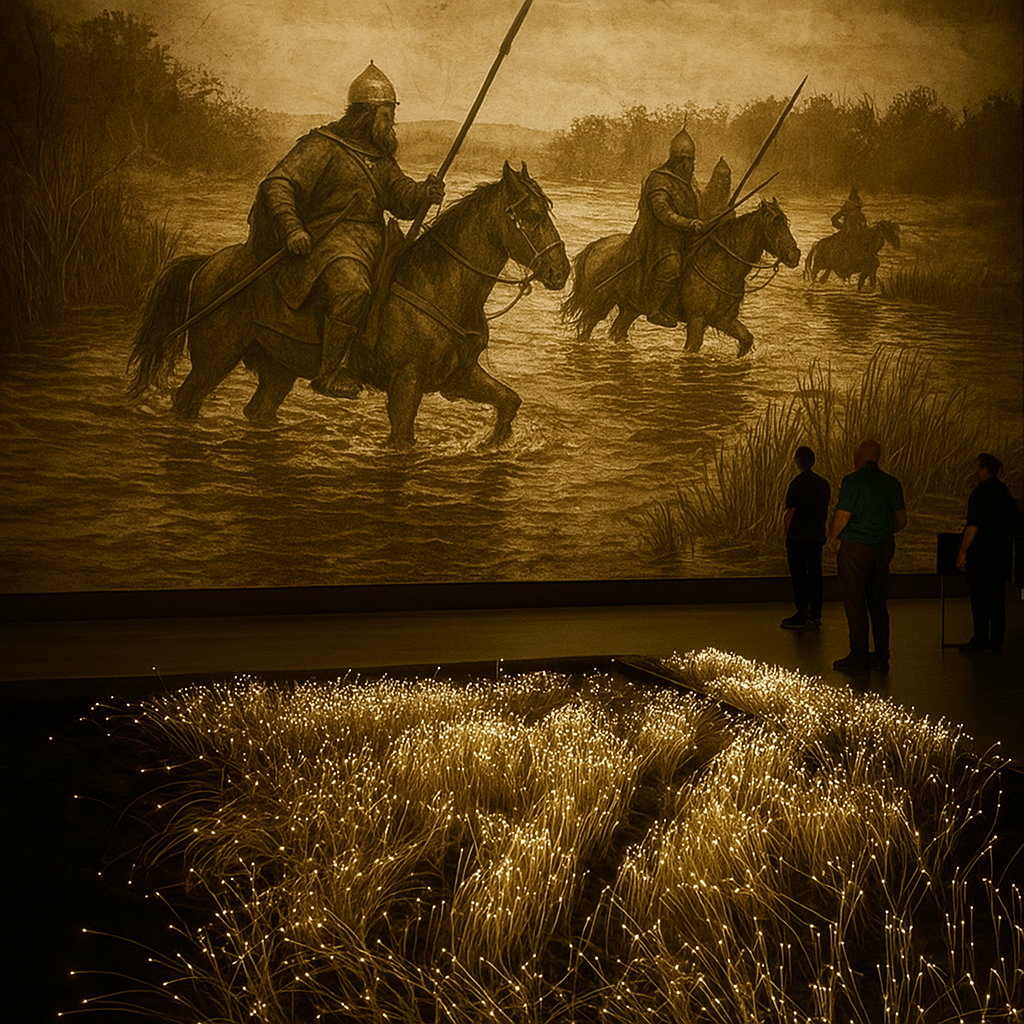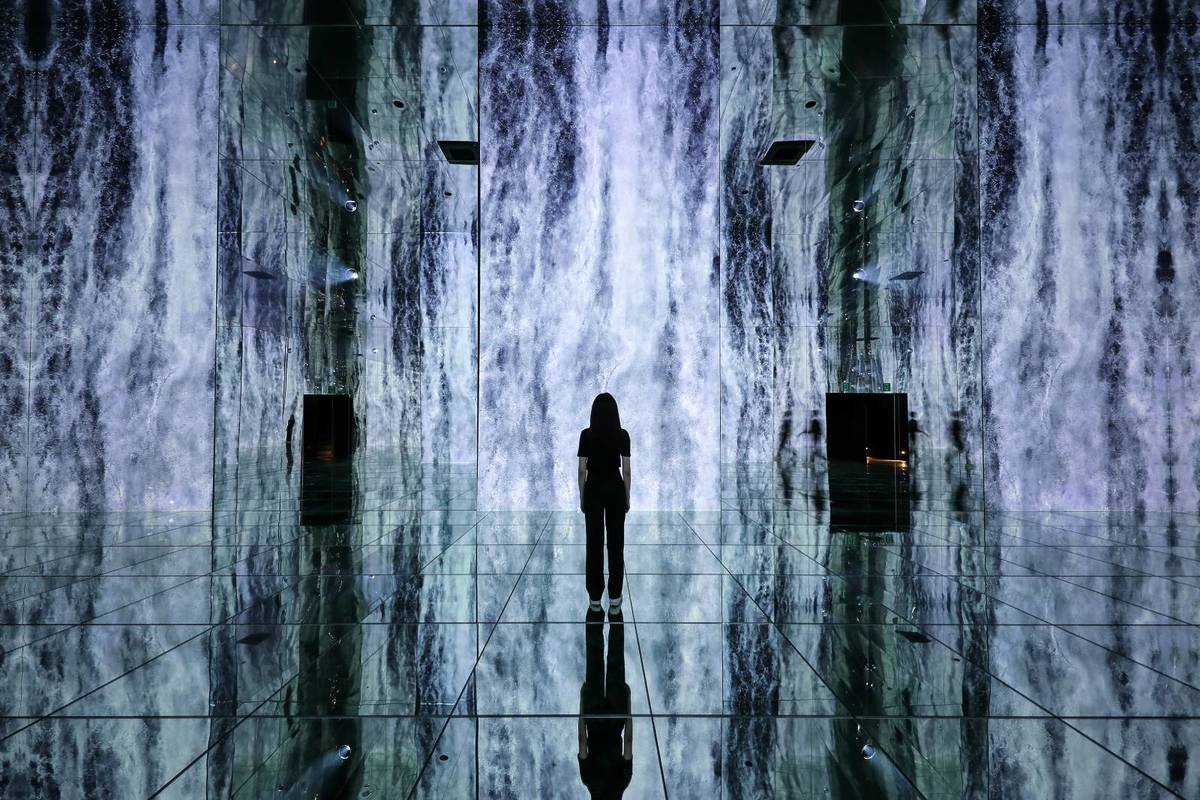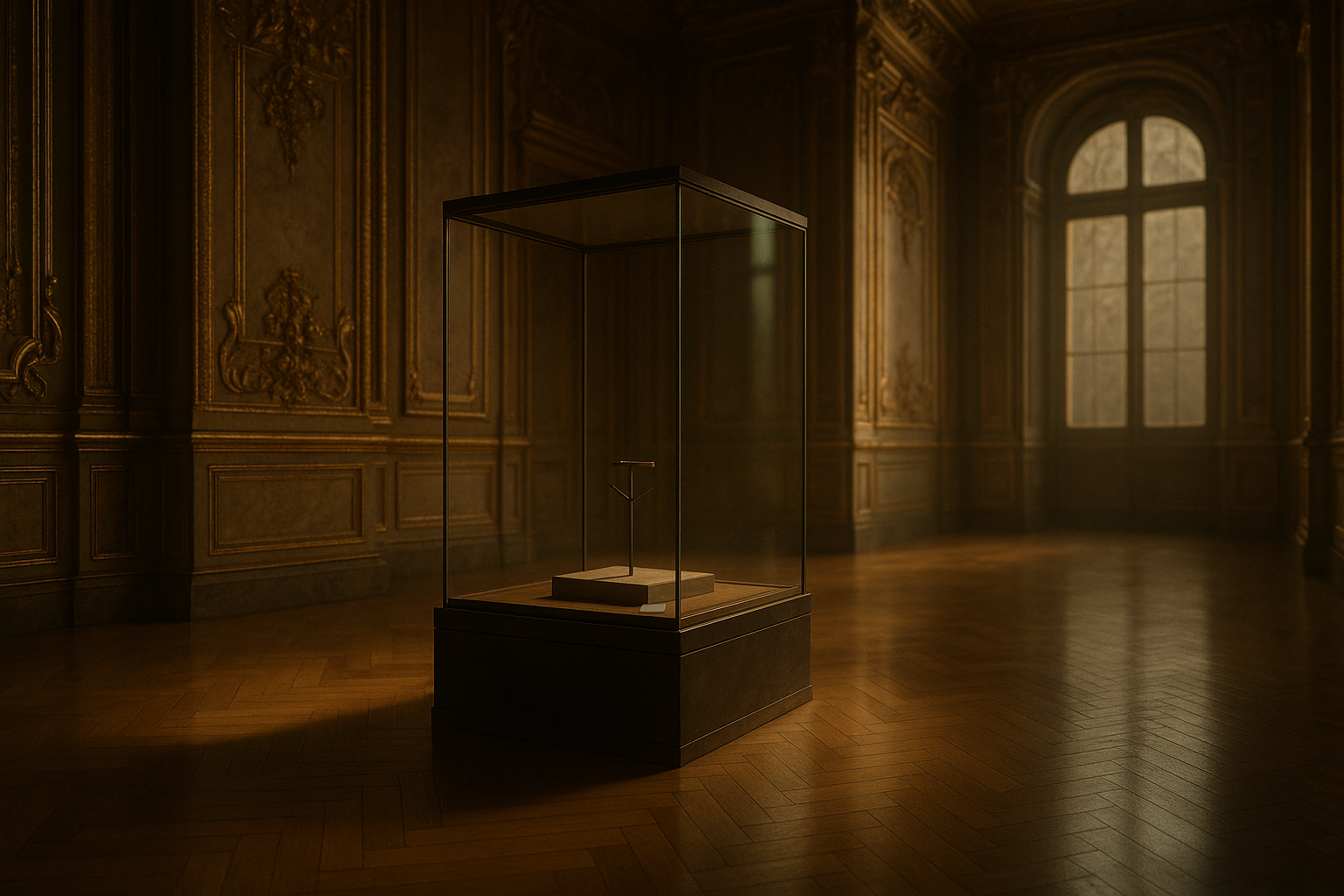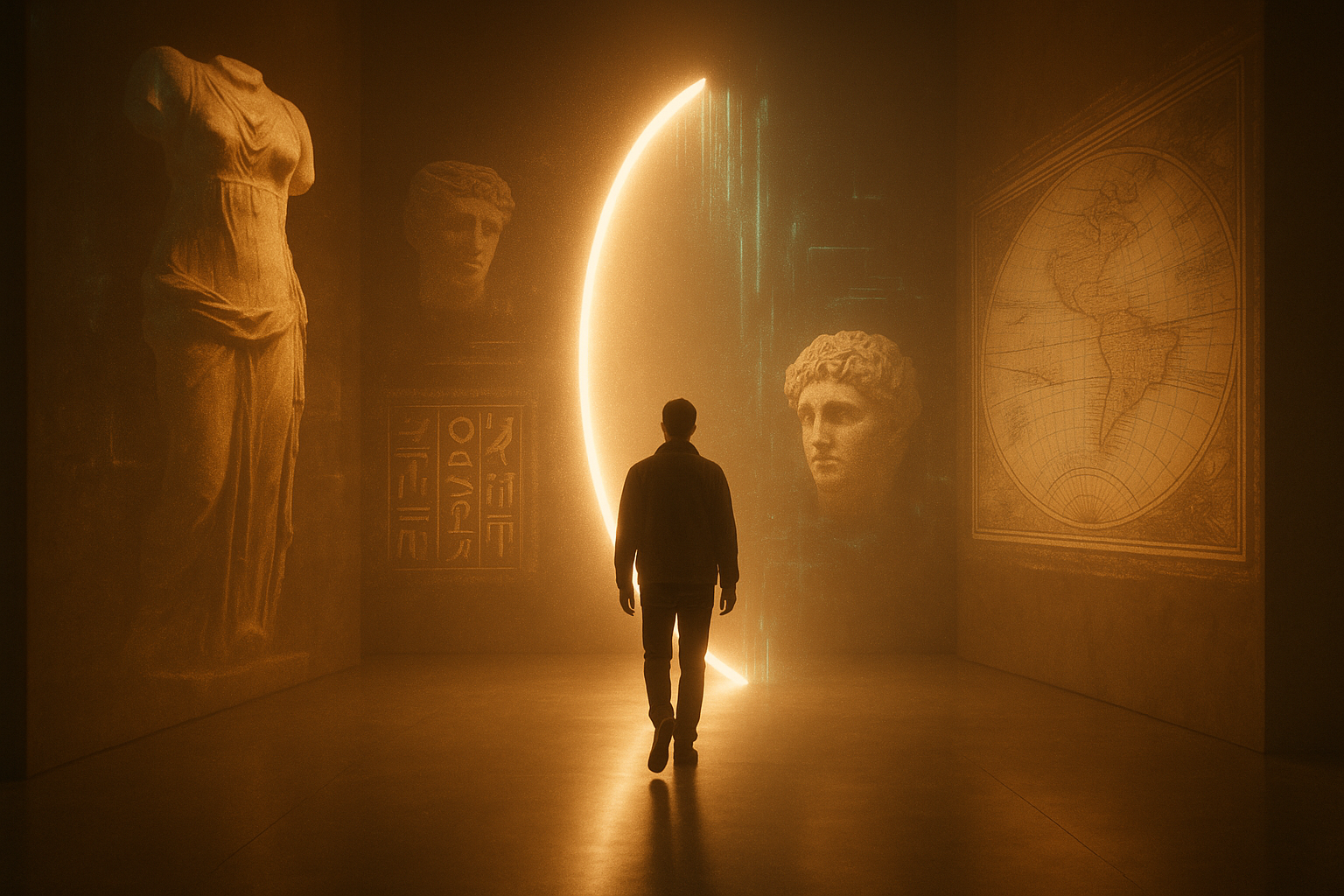Immersive exhibitions aren’t just “cool visuals” anymore, they’re becoming full-body, emotionally charged journeys. From museums and heritage sites to pop-up art spaces and historical VR, creators are using technology not just to show the past, but to make you feel it.
So what are the tools shaping this new wave of cultural storytelling?
Here are five technologies that will be changing the game and why they matter more than ever for anyone building the future of experience.
1. AI That Listens, Learns and Adapts
What if your exhibition could learn from its audience, not just after the show, but while people are inside it?
That’s exactly what the newest generation of AI‑driven design systems is making possible. Using a combination of computer vision, motion tracking and affective computing (technology that reads facial expressions, gestures and even voice tone), museums can now understand how visitors move, where they linger, and how they feel in different parts of an experience.
A recent study in Scientific Reports showed that AI systems can go beyond analytics to action: they can adjust lighting, sound, or exhibit layouts in real time to prevent bottlenecks, direct traffic and keep visitors engaged.
This means an exhibition might brighten a dim corner if too many people skip it, slow down a projection if visitors linger longer than expected, or soften sound in a busy area to reduce sensory overload. The result is an environment that feels less like a static installation and more like a living organism responding to its guests.
For visitors, this subtle adaptability feels invisible, but powerful. Without even realizing it, they’re guided through a smoother, more intuitive journey, with fewer interruptions and more “aha” moments. For curators and designers, it’s a game-changer: AI provides real‑time feedback on how stories land, letting teams refine exhibits on the fly instead of waiting for post‑visit surveys.
In short, AI transforms immersive spaces from “look‑don’t‑touch” displays into responsive ecosystems, constantly learning, optimizing and tailoring the experience to every audience.
2. Sound That Moves With You
What if sound didn’t just accompany a story, but immersed you in it?
That’s the power of spatial audio, also called 3D or binaural sound. Unlike traditional audio that plays uniformly from left and right speakers, spatial audio creates the illusion of sound coming from specific points in space, behind you, above you, or right next to your ear. The result? A soundscape that feels real, not just recorded.
Imagine walking through a recreated medieval town and hearing the blacksmith’s hammer echo from the left, while church bells ring faintly ahead. Or listening to a first-person narrative as if someone is whispering it over your shoulder. That’s not magic, it’s tech.
Leading institutions like the Smithsonian and the Louvre are increasingly incorporating spatialized audio guides and ambient soundscapes to heighten immersion. It’s especially powerful when combined with augmented reality (AR) or site-specific storytelling, turning any hallway, garden, or ruin into a dynamic stage.
For visitors, spatial audio doesn’t just enhance the atmosphere, it deepens emotional engagement. Studies have shown that audio-based immersion can increase empathy, memory retention, and even perceived realism. It helps visitors feel the story, not just follow it.
And unlike VR headsets, spatial audio remains low-barrier: with the right headphones or directional speakers, museums can deliver complex narratives that adapt to each visitor’s pace and position, without screens, queues, or instructions.
In short, spatial audio transforms sound from background noise into a narrative tool that surrounds you and stays with you long after the story ends.
3. Mixed Reality Without the Goggles
What if history didn’t just sit behind glass but stepped into the room with you?
Mixed Reality (MR) is one of the most powerful technologies in the immersive toolkit today. It blends the digital and physical worlds by overlaying interactive 3D content onto real environments, whether through AR glasses, smartphones, or room-scale projections.
Unlike Virtual Reality (which replaces your surroundings), MR builds on what’s already there. You might walk through a historic building and suddenly see its original architecture reconstructed before your eyes. Or hold up your phone to a painting and have the artist emerge in 3D to tell their story.
At exhibitions like Edge or Eternalle Notre-Dame, MR is being used to recreate lost monuments, animate historical figures, and trigger multi-sensory moments, all without needing to touch a single artifact. Visitors become time-travelers, switching between layers of past and present with a swipe or a blink.
What makes MR special isn’t just the “wow” factor, it’s the depth. It allows for non-linear storytelling, where people explore narratives at their own pace and curiosity level. Want to dive deep into the engineering of a Gothic cathedral? Tap the blueprint hovering in front of you. Curious about daily life in the 18th century? Open a window into the marketplace.
According to research from the Journal of Museum Education, interactive MR experiences significantly boost recall, emotional engagement, and learning outcomes, especially for younger and neurodivergent audiences. It’s not just entertainment, it’s high-impact education.
Mixed Reality doesn’t replace the real, it enhances it. And in doing so, it reshapes how we relate to time, space, and story.
4. AR and VR Are Finally Growing Up
Let’s be honest, for years, AR and VR often felt more like flashy gimmicks than storytelling tools. But in 2025, something shifted. These technologies are no longer just about showing off, they’re about making people feel.
Take the Natural History Museum in London. Their new exhibition Visions of Nature uses augmented reality not just to decorate walls, but to immerse visitors in possible futures, from rising oceans to thriving urban jungles. It’s not just wow-factor visuals. It’s emotional storytelling with a purpose.
Meanwhile, in India, more than 100 heritage sites have launched AR-powered audio journeys that activate through QR codes. Visitors scan, listen, and watch as digital layers bring statues, palaces, and forgotten voices back to life, right where they’re standing.
What’s changed? It’s not the tech, it’s the intent behind it.
Today’s AR/VR experiences are grounded in history, empathy, and emotional connection. They’re helping us see beyond what’s visible, into what was, what could have been, or what still might be.
Whether it’s virtual ruins rising from the dust, animated paintings whispering secrets, or immersive reconstructions of daily life, these tools are finally doing what they always promised: making the invisible unforgettable.
At Original Narratives, this shift matters deeply. We don’t use AR/VR because it’s trendy. We use it when it serves the story, when it helps a forgotten figure feel real again, or makes a historic space speak.
Because when done right, AR and VR don’t just add to the experience, they become part of its memory.
5. Measuring Immersion Is Now a Science
Once upon a time, “immersive” was just a vibe. Now? It’s a measurable phenomenon.
Thanks to breakthroughs in neuroscience, biometric sensors, and cognitive psychology, we can now track how deeply people are immersed, not just by asking them, but by studying how their bodies and brains respond in real time.
Tools like EEG headsets, heart rate monitors, and eye-tracking systems are being used in pilot projects across museums and cultural spaces to gather hard data on attention, engagement, and even emotional arousal.
A 2024 paper in Frontiers in Psychology revealed that exhibitions using multisensory triggers (sound, scent, haptics) produce significantly higher memory retention and emotional resonance than visual-only displays.
This research is already transforming the design of exhibitions. Imagine being able to test two different storytelling formats and know, with data, which one made people feel more, remember more, and stay longer. It’s not just about what looks good, it’s about what works.
Some immersive spaces are even starting to integrate live analytics dashboards that show how audiences are moving, interacting, and feeling within a space (anonymously, of course). This allows real-time tweaking of light, sound, or pacing to improve flow and experience, kind of like adjusting the volume based on the room’s mood.
At Original Narratives, we’re closely following these innovations, not to remove the mystery from immersion, but to design more intentionally. By understanding what moves people, we can craft stories that linger long after the exit door.
In the near future, exhibition reviews might not just say “it was cool”, they’ll show how it lit up the brain.
Why This Matters for Museums, Designers, and Visitors
If you’re working in cultural storytelling, these five trends aren’t just tech buzzwords, they’re tools for connection:
- For museums: immersive tech can draw in new audiences, make history stick, and protect fragile artifacts while still telling the story.
- For experience designers: these tools open up new narrative formats, from adaptive sound journeys to interactive scenes without screens.
- For travelers and visitors: immersive exhibitions create real emotional memories, not just photo ops.
Follow the Future of Storytelling
Want to learn more about the future of immersive storytelling?
Because when technology serves story and story serves emotion, the result is unforgettable.
Which of these technologies excites you most and which have you already seen in action?
Comment below or tag us in your latest immersive discovery.



